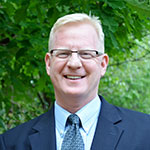Clean Harbors’ name is certainly an accurate one. The Massachusetts-based company, originally established in 1980 as an emergency-response business, has since expanded its skill set to become a leading provider of environmental, energy, and industrial services in North America. It’s now worth $3.4 billion, and it’s divided into four business units that provide services ranging from the handling of hazardous material to chemical cleaning to oil recycling to exploration in the energy sector. Though it has become de rigueur for companies to espouse their environmental consciousness, Michael McDonald, Clean Harbors’ assistant general counsel, says his company is actually “doing the doing” to make the world safer and less polluted. Here, he helps break down some of the specific ways it’s doing so.

Superfund Sites
The Comprehensive Environmental Response, Compensation, and Liability Act of 1980, often referred to as Superfund, was one of the first federal laws that established highly regulated cleanup processes for severely contaminated land. Clean Harbors usually tries to avoid such zones, but through some of its acquisitions, it has had to take on the unenviable task of purifying Superfund sites at the state and federal level.
There are hundreds of potentially responsible parties (PRPs) for any given Superfund site, including Clean Harbors as the site’s owner, and the remediation effort can vary depending on the percentage of liability for a certain PRP and how many other PRPs are involved. Generally, the work entails coordination with the Environmental Protection Agency (EPA), which first takes over the site and identifies its problems. The EPA oversees the cleanup and approves the PRPs’ plans, but then it’s up to the PRPs themselves to execute the plan, pay for it, and pay for the EPA’s oversight costs as well.
Last year, Clean Harbors was a part of a state Superfund site cleanup in Niagara Falls, New York. As the company was voting on a remedy and a contractor, it realized it could do the work much less expensively on its own. By doing so, it significantly reduced overall costs to the PRP group.
The Niagra Falls Cleanup
The cleanup process that Clean Harbors and the PRPs implemented at the Niagra Falls, New York, Superfund site was fairly typical. The crew performed the following:
- Prepared a remedial design based upon the EPA’s record of decision, a public document that explained which cleanup alternatives would be used to purify the site
- Performed a surface removal, which included the clearing of existing buildings, structures, and debris from the site
- Excavated and treated contaminated soil in the area
- Refilled the removed soil with site cover made from the zone’s former structures; this is a requirement for any future commercial or industrial use of the site
- Treated the groundwater using existing sewer infrastructure, per an agreement with the Niagara Falls Water Board
- Enforced an environmental easement for the property, restricting the site’s future use
- Prepared a final report describing the cleanup activities rendered and certified that all requirements were met or will be met
“One of Michael’s greatest strengths is his ability to pool the resources of Clean Harbors to attack a problem. Michael’s ability to work under pressure is incalculable. He and his team of in-house lawyers have presided over many of the legal challenges that come with the tremendous growth that Clean Harbors has achieved over the years. It has been a privilege to be a trusted trial lawyer for Clean Harbors.”
John F. Kennedy, Taft Stettinius & Hollister LLP

How To Be Successful At Emergency Response
McDonald outlines, in his own words, how Clean Harbors navigates crises, from natural disasters such as Hurricane Katrina to unfortunate accidents such as the Deepwater Horizon explosion.
 Being an emergency responder often starts long before the event occurs. Often, Clean Harbors will contract with government agencies and private entities. You say, ‘If you have an emergency, we’ll be there, or we’ll try our best.’ Ninety-nine out of 100 times, Clean Harbors is ready to respond. That’s where it starts.
Being an emergency responder often starts long before the event occurs. Often, Clean Harbors will contract with government agencies and private entities. You say, ‘If you have an emergency, we’ll be there, or we’ll try our best.’ Ninety-nine out of 100 times, Clean Harbors is ready to respond. That’s where it starts.
Your job is 24-7. During a significant response, our team is living at the site, sometimes for months at a time. Once, I was on my Blackberry, negotiating contracts—with my family in the car on the driveway, waiting to go on vacation. There isn’t time to be off, and you do what you need to do to get it done.
You need experience. These are very stressful projects, and you’re going into difficult circumstances. There are questions you just are not going to answer before you go out the door. Our workers have to be able to hop in a truck and head somewhere without all the information. The only way they can be comfortable in that situation is by having the experience.
It’s imperative to work with regulatory authorities; what needs to be done is decided by them. In Hurricane Katrina, we worked for state agencies and the federal government. Simply doing what needs to be done is what we do well.
Understand priorities. During Hurricane
Katrina, the number one priority was human health and safety. We were helping people off their roofs on our boats down there. One of the advantages that we have is that our equipment is stationed in places all across North America. We can often get there right after first responders are overwhelmed.
Be able to evolve with the situation as it changes and moves. By definition, these are unplanned events. Bringing trained workers and the proper equipment where they need to be is a big challenge. Hurricane Katrina was a wide area, but it’s not like it’s all right off a highway; you may have to travel by boat, helicopter, or even rail. Then, being able to manage large forces in a remote, heavily damaged area is a necessity.
We tend to stay longer because we’re one of the larger firms that does this and we’re
capable of hiring subcontractors to augment our forces. For Deepwater, we stayed for months and months. For Hurricane Katrina, we were still cleaning up hazardous waste that had been washed ashore and dislodg-
ed months after as well. But, ultimately, [how long we stay is] up to the government agency handling it or the private organization in charge.
“Our equipment is stationed in places all across North America. We can often get [to the site of an emergency] right after first responders are overwhelmed.”
Michael McDonald, Assistant General Counsel

Construction At Ruth Lake
Though Clean Harbors cut its teeth in the environmental sector, it also practices traditional construction. In 2009, the company acquired oil field company Eveready, which also had a lodging business as a part of its operations. To serve staff working at the remote Athabasca oil sands in Alberta, Canada, Clean Harbors constructed the multiuse Ruth Lake Lodge.
The 604-room, 220,000-square-foot space, completed in 2013, was built by a company subsidiary that does modular construction. It not only houses Clean Harbor employees but also others working in the secluded area, who spend large periods of time away from home.
The project was important for business because, though construction in the United States shuts down considerably during the winter, in the oil sands it begins to intensify. And, much like Clean Harbor’s emergency-response efforts, constructing the Ruth Lake Lodge required the company to work in harsh conditions, including severe-cold temperatures of -65 degrees Fahrenheit.
The company provided first-class amenities and all the comforts of home to make drilling for oil in subzero temperatures a little more bearable. “The idea was to have a place for these folks to live for a while that wasn’t just a place to rest a head,” McDonald says. The lodge offers a restaurant and dining room, a private theater, 4,000 square feet of workout space, and a recreation room complete with pool tables, air hockey, foosball, video games, and even a golf simulator.





